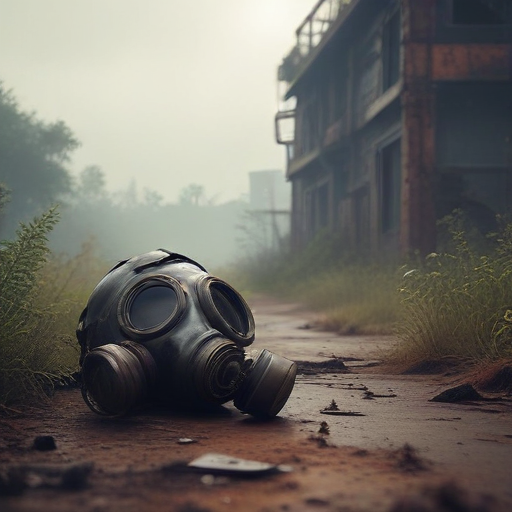As I navigated through the dense lowland swamps, the turbulent red winds whispering behind me, my thoughts shifted from the mission to the very land beneath my feet. The site that later became known for the devastating Chernobyl nuclear disaster was once deemed an ideal choice for a power plant, with its rich resources and skilled labor force. Now, what remains is a sprawling, dark testament to that decision—over 60 square kilometers of desolation and danger.
STALKER 2: Heart of Chornobyl encapsulates more vividly than any game before it how nature can shape our intentions, for better or worse. Developed by GSC Game World, the game’s intricate systems immerse players in a haunting piece of Ukraine, a landscape that’s both beautiful and perilous, drawing players into its depths even as it threatens to consume them.
The game challenges players with treacherous paths and uncertain objectives, often leading to confrontations with both mutants and fellow Stalkers. The missions are not simply about killing or retrieving lost technology—they involve navigating a complex web of factions and dangers. Among all the threats in the Zone, perhaps the most menacing is the land itself.
First introduced in 2007 with STALKER: Shadow of Chernobyl, the STALKER series unfolds in an alternate reality where the Chernobyl disaster is merely one facet of a larger mystery. Blending elements of survival horror and tactical gameplay, STALKER poses many dangers, from bizarre anomalies to hostile wildlife, but the most lethal encounters often come from raging storms known as “emissions.”
These emissions engulf the sky with ominous, swirling red clouds, unleashing lethal bolts of lightning and poisonous radiation. As I raced to find shelter amid the chaos, I couldn’t shake the eerie beauty of the storms, punctuated by the unsettling sounds of distant gunfire—an ever-present reminder of both the peril and unpredictability of the Zone.
The game’s A-Life AI innovatively manifests as NPCs and creatures acting independently, creating a dynamic and unpredictable environment. I often find myself caught in the crossfire of conflicts, sometimes as a participant, other times as a mere observer. During one encounter, a frenzied gunfight raged near my refuge as I sought solace from the furious storm.
Inside a dilapidated shelter after the fray, the haunting aftermath left behind empty bottles and grim reminders of life in the Zone. The moment of quiet brings forth a mix of relief and reflection; had things been different, I could have shared warmth and stories with fellow survivors. Instead, I’m left to confront the grotesque remnants of battle, the chaotic glitches of the digital world cleverly juxtaposed against the haunting atmosphere of a land steeped in tragedy.
Despite the game’s beauty and sense of immersion, it struggles with some technical issues that disrupt the experience. Moments of chaos are often marred by clumsy animations and unexpected glitches, detracting from the overall experience. However, the developers are committed to improving the game, promising a day-zero patch to address these concerns.
For avid fans of open-world games, STALKER 2 offers a vast landscape ripe for exploration, showcasing more than 60 square kilometers of treacherous wilderness and crumbling industrial environments. While the underlying systems need refinement, the allure of the Zone—the wild, untamed land brimming with adventure and terror—remains ever enticing.
As players venture forth into this haunting new world, they will find both challenges and stunning landscapes awaiting them. The journey may be fraught with danger, but the potential for adventure is unmatched. Good luck, for those who dare to tread where few return unscathed.
In summary, STALKER 2: Heart of Chornobyl is an adventurous yet unsettling journey through a beautifully crafted world that begs for exploration while continually testing players’ survival skills. While it faces technical challenges, the game’s promise of further improvement and its immersive environments hold great potential for fans of the genre.
